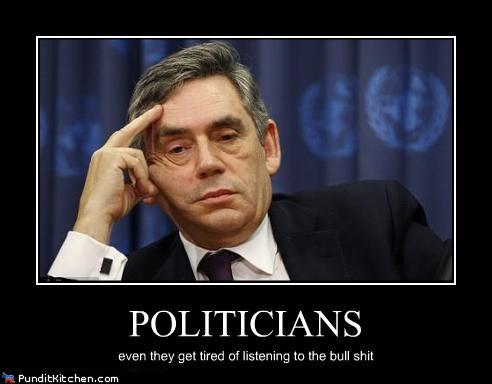The last post was somewhat short and interesting…this one is going to be long and dull and worthy.

The Beeb loves to quote Balls and the Labour Party mantra that Osborne has robbed the poorest in society in order to pay for a tax cut for his millionaire chums by lowering the top rate of tax.
The BBC may or may not have done an in depth analysis of the top rate tax cut to 45%….and may have declared it a wizard wheeze….whether they have or not is irrelevant as it is pretty much now ‘conventional wisdom’ for BBC presenters to suggest that the cut is unfair and ruinous for the economy.
Just how true is that?
And just how much of the UK tax revenue is generated by the top 1% so often pilloried by the Occupy scallywags?
The IFS says: In fact, it is not clear whether the 50% rate will raise any revenue at all….. at some point, increasing tax rates starts to cost money instead of raising it…..a revenue-maximizing tax rate corresponds to an income tax rate of 40%. So, according to these estimates, the introduction of the 50% rate would actually reduce revenue.
But setting top tax rates is not just a matter of maximising revenues….. It also reflects society’s attitude to extreme affluence.
“The significance of the 50 per cent income tax rate is less the paltry sum it might raise (or cost) than the substantial hit on high earners it represents.”
In other words it’s all about appearances and politics not monies generated…and a Labour friendly BBC seems not too inclined to dispel the myths.
In 1978 the top 1% paid 11% of the income tax total.
In 2012 the top 1% paid 27.7% of income tax.
1% on a 50% tax rate paid £47 bn….27.7%
34% on a 40% tax rate paid £57 bn….34%
50% on 20% tax rate paid £17bn….10%
(There is also an anomalous 60% rate for income between £100,001 – £114,890)
So 1% on a tax rate of 50% will pay £47bn…whilst 1% on a tax rate of 20% only pay £0.34bn….in other words the top 1% pays 138 times more tax than people on 20% pay.
Not only that but once National Insurance contributions are taken into consideration the top rate of tax is 58%….one of the highest in the developed world.
One of the favourite bug bears of Balls and the concerned BBC presenter is VAT…..as we all ‘know’ VAT hits the poorest hardest doesn’t it?
Well no not in fact so says the IFS……
‘VAT in fact is a smaller share of expenditure for poorer households in the UK, since goods subject to zero or reduced rates of VAT are mostly necessities such as food and domestic fuel. So, if lifetime income and lifetime expenditure are equal, as they will tend to be (the main difference being bequests given and received), VAT must actually take up a smaller share of lifetime resources for lifetime-poor households, and in that sense it is progressive.’
So that is another BBC/Balls myth that bites the dust.
Victoria Derbyshire was today banging on about tax avoidance…is it immoral? etc…however she would have been better to spend her time looking at the rates of income tax levied on us than the dodgy accounting schemes dreamt up on the Channel Islands……What does the HMRC have to say about the schemes?….
Changes to tax planning/avoidance/evasion
2.7 Behavioural responses are also expected around tax planning, avoidance and evasion. It is useful to sub-divide these behavioural responses into three groups:
The impact of these types of behavioural effects on other tax revenues is smaller than in the case of labour supply responses as they have much less effect on productivity and consumption.
The impact on the level of GDP
2.13 The impact of the behavioural responses on the level of GDP vary by type of response: labour supply responses such as reduced hours or effort will have a direct impact on GDP as they reduce the amount of economic activity in the UK. The impact of increases in tax planning and avoidance on GDP will be much smaller (than loss of GDP due to higher taxes) as they do not necessarily impact on economic output.
To answer the question as to whether Osborne’s proposed cut in the top rate of income tax to 45% will be more effective at raising revenue than the 50% rate we can look at the HMRC study into this…..some of which has been cherry picked and is spread out below for you to digest at your leisure…enjoy……but it basically says the cut is the right thing to do….the tax yield from the 50% levy will be less than predicted….and possibly negative…ie making less revenue than before the rate was raised to 50% by labour.
The Exchequer effect of the 50 per cent additional rate of income tax
The 50 per cent additional rate of income tax was introduced on 6 April 2010. It was the first increase in the highest rate of tax in the UK for over 30 years, and was expected to yield around £2.5 billion.
The evidence contained in this report has also been used to inform the Exchequer estimates for the Budget 2012 measure to reduce the additional rate of tax from 50 per cent to 45 per cent.
The analysis shows that there was a considerable behavioural response to the rate change, including a substantial amount of forestalling: around £16 billion to £18 billion of income is estimated to have been brought forward to 2009-10 to avoid the introduction of the additional rate of tax.
The modelling suggests the underlying behavioural response was greater than estimated previously in Budget 2009 and in March Budget 2010, decreasing the pre-behavioural yield by at least 83 per cent. This result is also consistent with that contained in the Mirrlees review, and suggests the additional rate is a highly distortionary form of taxation.
The conclusion that can be drawn from the Self Assessment data is therefore that the underlying yield from the additional rate is much lower than originally forecast (yielding around £1 billion or less), and that it is quite possible that it could be negative.
This conclusion is supported by wider academic literature which generally suggests a greater behavioural response than was included in the Budget 2009 and March Budget 2010 estimates. Evidence from the U.S. suggests the behavioural responses could be even higher, with an even lower yield.
The conclusion is also consistent with the view that international labour mobility has increased in the last 15 to 20 years as both legal impediments and general migration costs have been reduced, which means the adverse affect of high rates of personal taxation on both inward and outward migration to the UK and tax revenues can be significant.
The report also describes how the impact of introducing the additional rate may extend well beyond the direct Exchequer impacts. In particular, other things equal, high tax rates in the UK make its tax system less competitive and make it a less attractive place to start, finance and grow a business. The longer the additional rate remains in place the more people are likely to consider it a permanent feature of the UK tax system and the more damaging it would be for competitiveness. This suggests the negative impact on GDP may increase over time, and therefore the direct yield (and revenues from other tax bases) might fall over time toward or beyond zero.
The impact of the additional rate on behaviour
2.2 Understanding the behavioural response to the introduction of the additional rate of tax is particularly important as it is generally accepted that individuals with higher incomes are more responsive to changes in tax rates,
There are two main types of labour supply responses:
1. A reduction in the number of hours people work or the amount of effort they make
. A higher tax rate reduces the reward for working. This means individuals have an incentive to work less and take more leisure time (the substitution effect). It also impacts negatively on entrepreneurship as it reduces the incentive to start, finance and grow a business.
The overall effect of a tax rate increase on labour supply is negative.
2. A reduction in UK labour market participation
. An increase in marginal tax rates and average tax rates can impact on UK labour participation decisions, including migration (both inward and outward), and retirement decisions. …
Those affected (i) operate in an internationally competitive labour market so are more likely to leave the UK in response to high tax rates; and (ii) are over 55 (the minimum age at which pensions can be withdrawn) so are more likely to retire.
A reduction in real income is usually associated with a reduction in expenditure and corresponding indirect tax revenues.
2.6 It is also worth noting that the Exchequer impacts of changes in migration can be considerable as the Exchequer loses the tax on the individuals‟ entire income rather than just the income subject to the additional rate.
The impact on economic growth
2.16 In addition to their impact on the level of GDP, changes in tax rates can have an impact on economic growth. Other things equal, high tax rates in the UK make its tax system less competitive and make it a less attractive place to start, finance and grow a business. Entrepreneurs and high-skilled workers may find it more rewarding to implement their ideas in other countries. The prospect of less reward for their work effort may also deter top managers of both foreign and domestic firms from investing in the UK. An international comparison of tax rates is contained in Chapter 4.
2.17 The relationship between tax and growth has been extensively studied in research undertaken by the OECD… Their analysis suggests that corporate taxes are the most harmful type of tax for economic growth, followed by personal income taxes and then consumption taxes, with taxes on immovable property being the least harmful tax.
2.18 The OECD’s analysis also highlights that high top rates of income tax may be harmful for economic growth.
2.23 Modern theories of economic growth highlight that higher levels of human capital raise the productivity levels of the workforce both directly and indirectly.
. The indirect effects come through the greater capacity of more highly skilled individuals to raise productivity through “learning by doing”, and through the spillovers that are achieved by passing their knowledge on to their colleagues. More highly skilled workers are more likely to be quicker to identify the potential of new technologies, and to adapt them successfully to the needs of their own business.
2.24 Empirical studies confirm that higher levels of education facilitate the development and diffusion of new techniques and products, thereby boosting economic growth. One study that surveyed results from over twenty other studies concluded that “there is compelling evidence that human capital increases productivity”.
Another study that takes account of educational attainment and on-the-job skills acquisition estimates that a 1 per cent increase in human capital raises the level of productivity (output per worker) by between 0.07 percent and 0.19 per cent.7
2.25 High tax rates may affect the amount of human capital available through two channels. One is that they reduce the post-tax returns to human capital, and therefore individuals may invest less in education and training than they might otherwise have chosen. The second channel, already mentioned, is that part of the skilled workforce may opt to live and work in a country where taxes on income are lower.
Empirical estimates of taxation and growth
2.31 Empirical studies provide some evidence that high marginal rates of tax can act to depress rates of economic growth.
Summary of dynamic effects on growth
2.33 High marginal rates of income tax risk weighing on the growth potential of the economy by deterring the most highly productive individuals from living and working in the UK, and through deterring the foreign direct investment that can be an important element in the diffusion of new technologies and techniques. These effects are likely to be modest if those who are liable to pay the additional rate of tax expect that it will be temporary.
2.34 However, if the rate were to remain at 50 per cent for an extended period, there would be a risk that the effects on growth could become more material.












